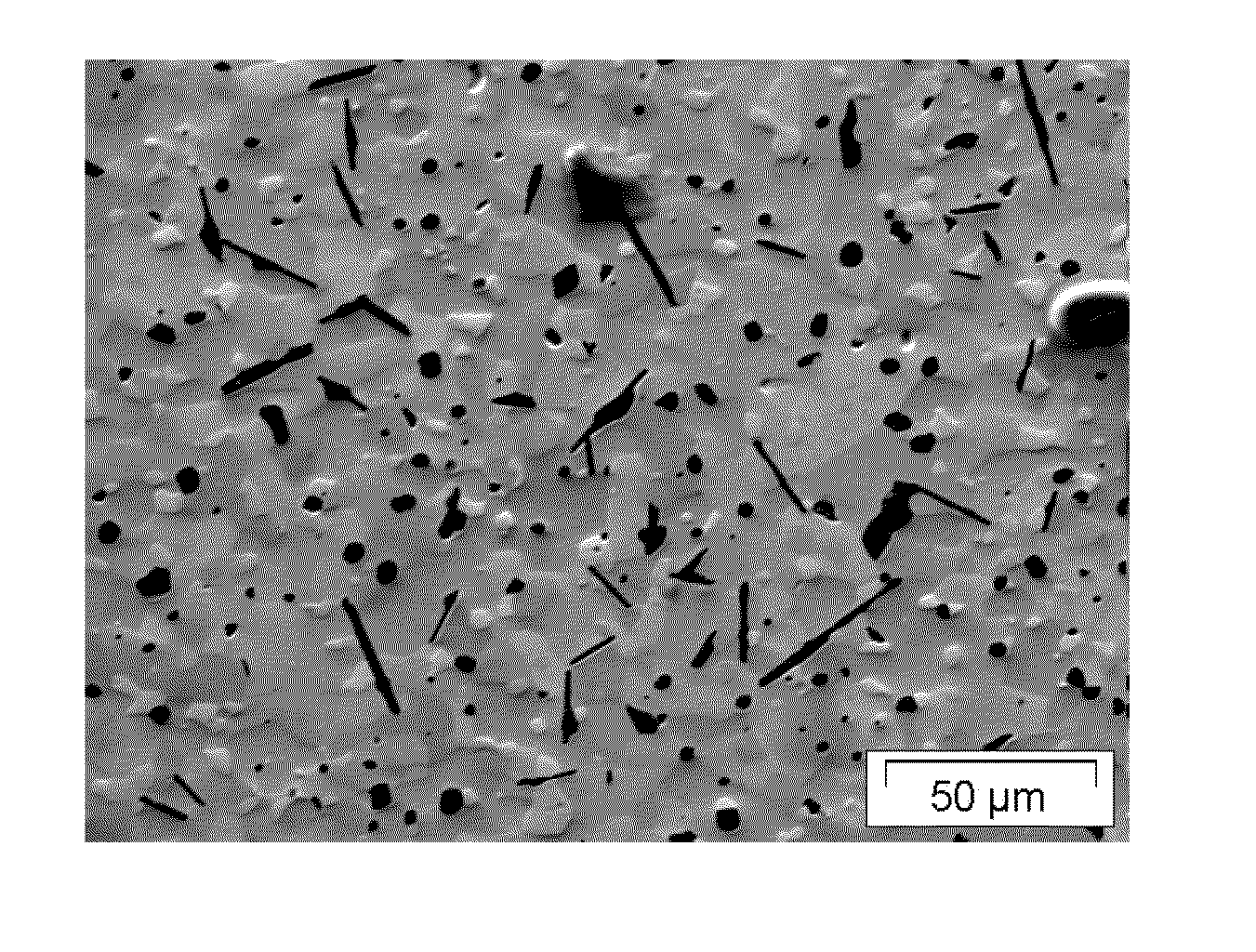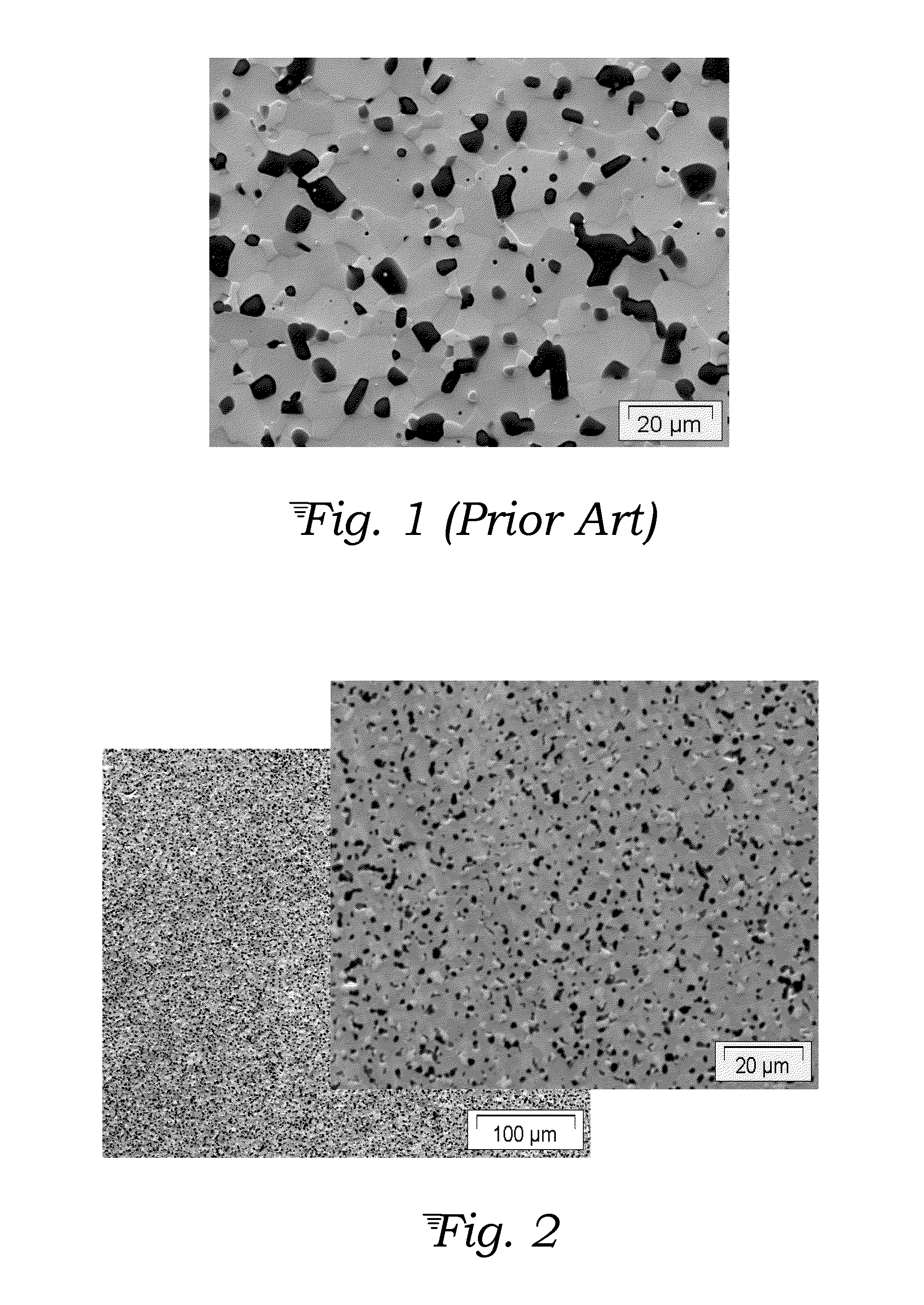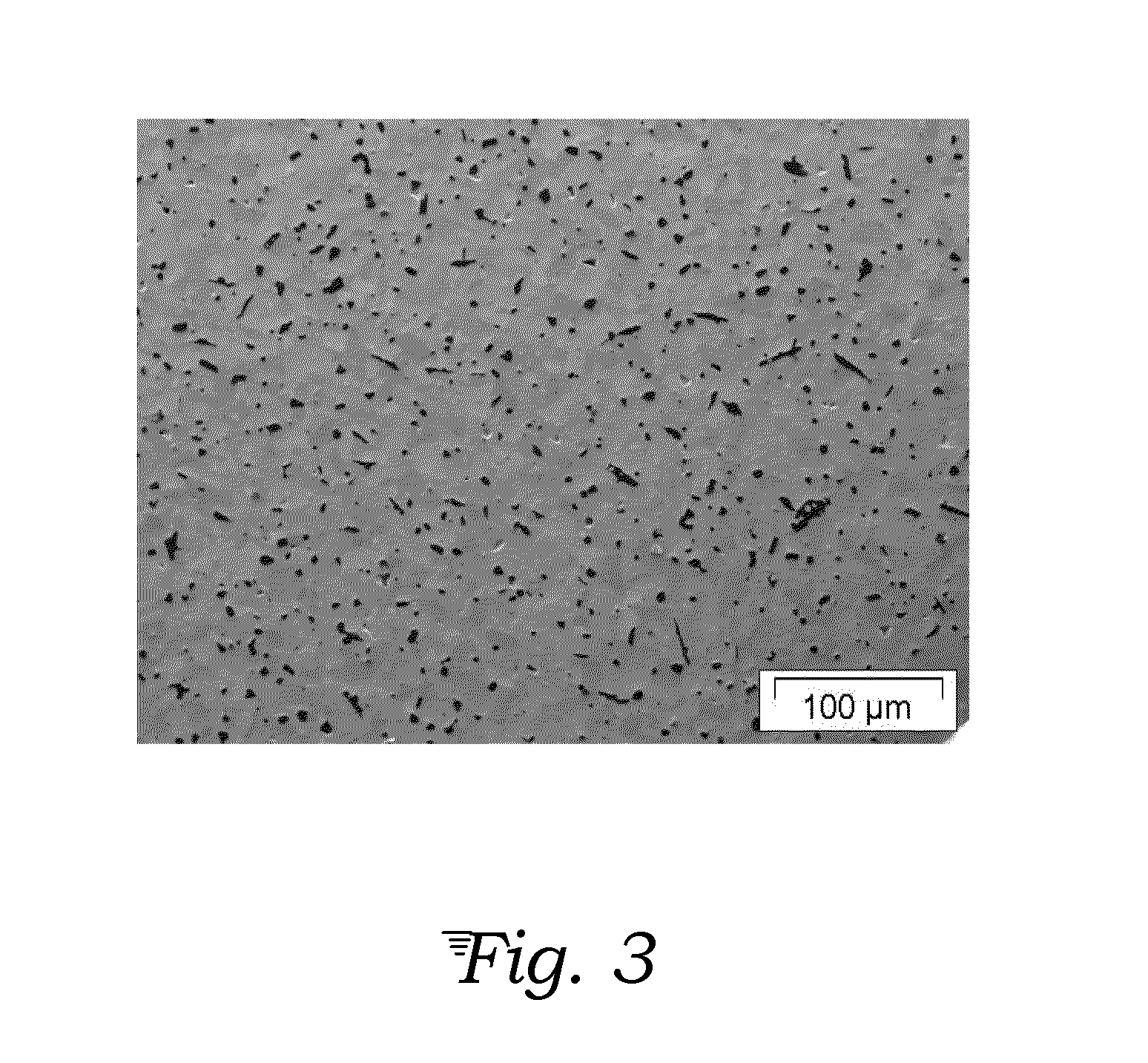In-situ formation of reinforcement phases in ultra high temperature ceramic composites
a technology of ceramic composites and reinforcement phases, applied in the field of ceramic compositions and processes of obtaining ceramic products, can solve the problems of thermal shock resistance, fracture toughness, sudden material failure, etc., and achieve the effects of improving thermal shock resistance, high temperature, and increasing mechanical properties
- Summary
- Abstract
- Description
- Claims
- Application Information
AI Technical Summary
Benefits of technology
Problems solved by technology
Method used
Image
Examples
examples
[0029]FIG. 1 shows a baseline hot pressed UHTC microstructure of HfB2: 20 vol % SiC formed from powdered HfB2 and SiC. It can be seen that this known UHTC system does not have high aspect ratio SiC reinforcements.
[0030]FIG. 2 shows a spark plasma sintered (SPS) UHTC microstructure of HfB2: 10 vol % SiC formed from a mixture of powdered HfB2 and a pre-ceramic polymer. The SPS process pulses electric current through a graphite die containing the ceramic mixture, thus generating heat internally at a very fast rate. It can be seen in FIG. 2 that this SPS processing results in a very refined microstructure, but no evidence of acicular reinforcing grains.
[0031]FIG. 3 shows hot pressed microstructure of HfB2: 10 vol % SiC formed from a mixture of powdered HfB2 and a pre-ceramic polymer, but at a dwell time of less than the minimum 30 minutes. It can be seen that short hot pressing times result in few acicular grains.
[0032]FIGS. 4-7 show hot pressed microstructures of HfB2: SiC formed from ...
PUM
| Property | Measurement | Unit |
|---|---|---|
| melting temperature | aaaaa | aaaaa |
| pressure | aaaaa | aaaaa |
| temperature | aaaaa | aaaaa |
Abstract
Description
Claims
Application Information
 Login to View More
Login to View More - R&D
- Intellectual Property
- Life Sciences
- Materials
- Tech Scout
- Unparalleled Data Quality
- Higher Quality Content
- 60% Fewer Hallucinations
Browse by: Latest US Patents, China's latest patents, Technical Efficacy Thesaurus, Application Domain, Technology Topic, Popular Technical Reports.
© 2025 PatSnap. All rights reserved.Legal|Privacy policy|Modern Slavery Act Transparency Statement|Sitemap|About US| Contact US: help@patsnap.com



